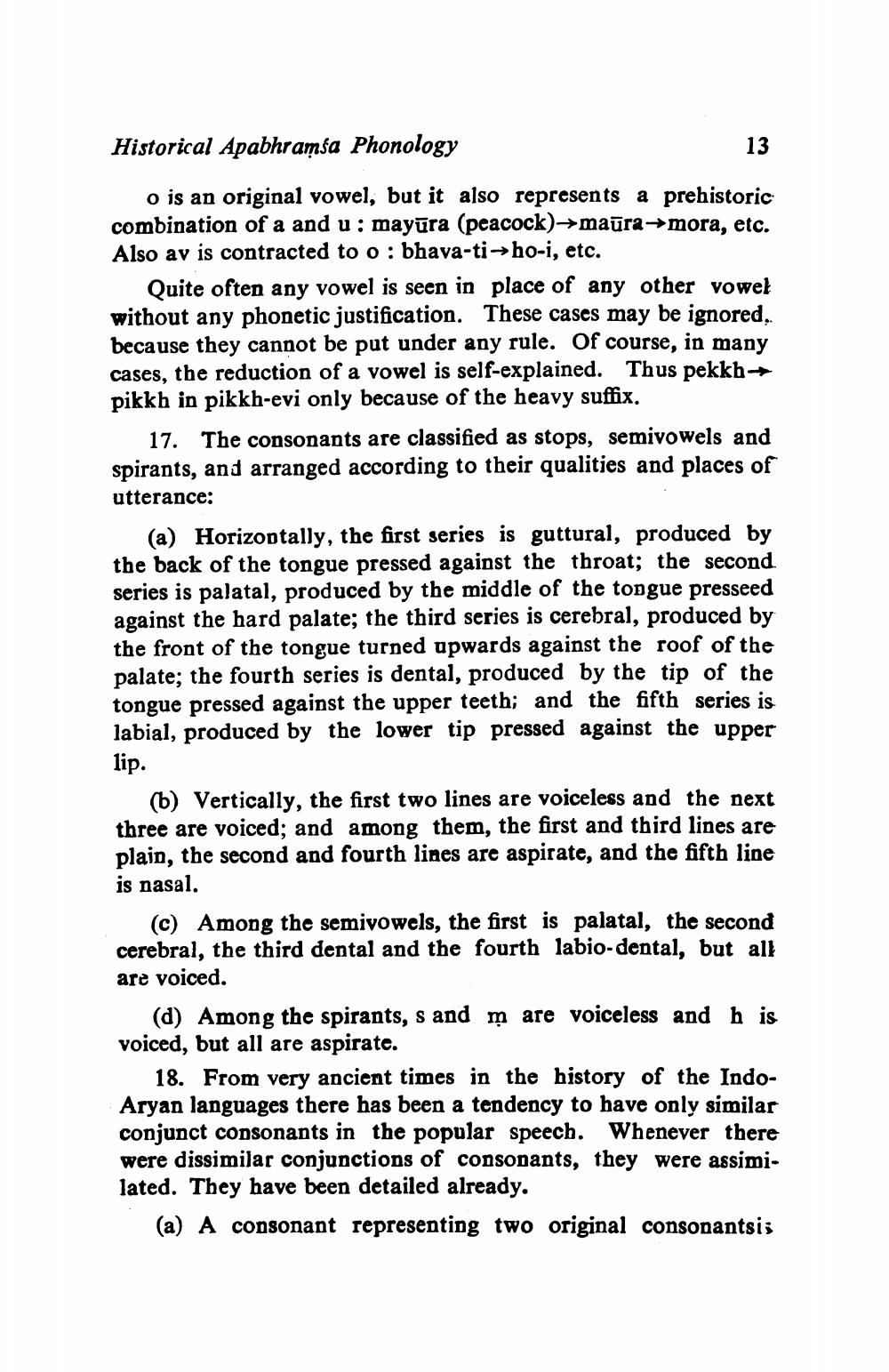________________
Historical Apabhramsa Phonology
13
o is an original vowel, but it also represents a prehistoric combination of a and u: mayūra (peacock) maūra +mora, etc. Also av is contracted to o : bhava-ti → ho-i, etc.
Quite often any vowel is seen in place of any other vowel without any phonetic justification. These cases may be ignored, because they cannot be put under any rule. Of course, in many cases, the reduction of a vowel is self-explained. Thus pekkh pikkh in pikkh-evi only because of the heavy suffix.
17. The consonants are classified as stops, semivowels and spirants, and arranged according to their qualities and places of utterance:
(a) Horizontally, the first series is guttural, produced by the back of the tongue pressed against the throat; the second series is palatal, produced by the middle of the tongue presseed against the hard palate; the third series is cerebral, produced by the front of the tongue turned upwards against the roof of the palate; the fourth series is dental, produced by the tip of the tongue pressed against the upper teeth; and the fifth series is labial, produced by the lower tip pressed against the upper lip.
(b) Vertically, the first two lines are voiceless and the next three are voiced; and among them, the first and third lines are plain, the second and fourth lines are aspirate, and the fifth line is nasal.
(c) Among the semivowels, the first is palatal, the second cerebral, the third dental and the fourth labio-dental, but all are voiced.
(d) Among the spirants, s and m are voiceless and his voiced, but all are aspirate.
18. From very ancient times in the history of the IndoAryan languages there has been a tendency to have only similar conjunct consonants in the popular speech. Whenever there were dissimilar conjunctions of consonants, they were assimi. lated. They have been detailed already.
(a) A consonant representing two original consonantsis




